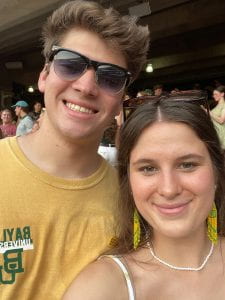This week I’m going to get a little personal. I have a boyfriend, his name is Kyle, and we have been dating for over four years. Yes, you read that correctly, over four years. We started dating our sophomore year of high school and are still dating his junior my senior year of college (I am graduating a year early). Sadly, we do not attend the same universities. I am at Baylor and he is at Texas A&M. Dating long distance is not easy. We went from seeing each other almost every day to seeing each other every other week. We had to learn an entirely new way to communicate. Technology is a beautiful thing that helped ease this transition. Now, we use multiple medias to communicate a day. The main communication modes we use are: texting, Snapchat, FaceTime, and Instagram. This is not an exhaustive list, it is just the media we use daily.
Media Multiplexity theory is a theory of how technology and media fits into our interpersonal relationships. In this theory, there are strong ties (best friends, boyfriends, etc) and there are weak ties (acquaintances). Simply put, “the stronger the relational tie we have with that person, the more media we will use” with them (Griffin, 160). The same can be said for the other way around. Now, what is a strong tie? According to Griffin, a strong tie is “a relationship involving a large investment of time and emotional energy” (160). Every example given earlier fits this description. Any person who is a family member, close friend, or significant other requires a lot of time and emotional energy to upkeep that relationship. Thus, there is a strong tie between you and that person. On the other hand, a weak tie may be a coworker or the person you sit next to in class but never see outside of that. Each time you see them, you make polite conversation and talk about how stressful work or that class is. This exemplifies how the time and emotional energy spent on these relationship upkeeps are low. In Media Multiplexity Theory, Griffin states that “what differentiated strong ties from weak ties was the number of media the pair employed” (162). So, according to this theory, you would expect that in relationships with the people you hold strong ties with, you will use more forms of media to keep in touch and communicate.
This holds true for Kyle and me. He is the person I am closest to, so you could say I have the strongest tie with him. I use the most forms of media to keep in touch with him than I do with any other person. This has rang true throughout our relationship, not just when we went long distance. Like I said earlier, we use four types of media daily. Our main form of media we use is texting because it is the easiest to still have quality communication even when both of us are very busy. Our schedules do not always line up, but media does allow us to still communicate well, even when we live an hour an a half away from each other.
Here is a picture of Kyle and me cheering on Baylor football:

Works Cited:
Griffin, E. A., Ledbetter, A., & Sparks, G. G. (2019). A first look at communication theory. McGraw-Hill Education.